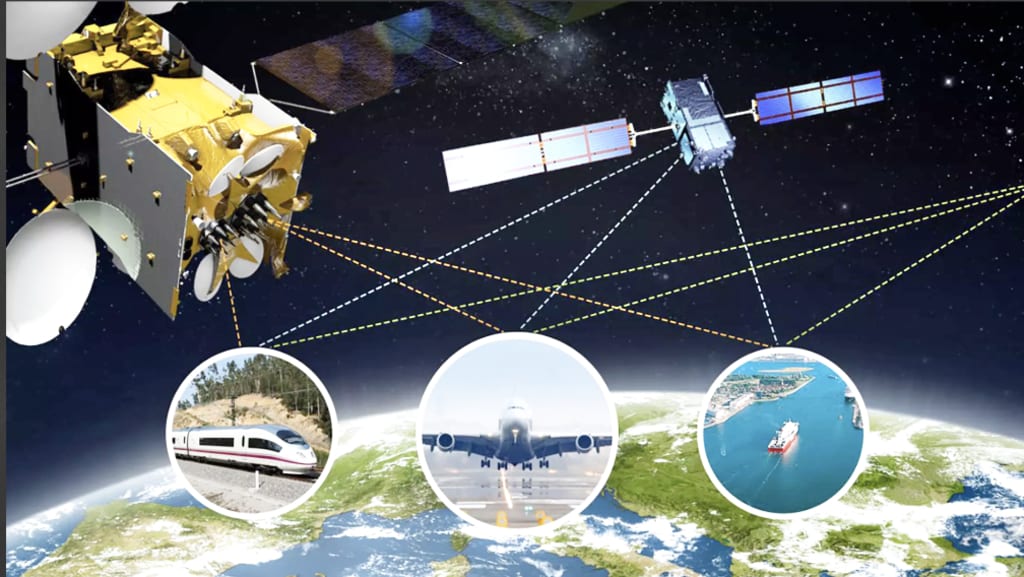Satellite as a Service: Global Satellite as a Service Enabling Instant Connectivity Around the World
Satellite as a Service

The Growing Demand for Satellite as a Service Industry
As more devices become connected and require reliable internet access wherever needed, the demand for global satellite connectivity is rapidly increasing. An estimated 31 billion devices will be connected to the internet by 2025, with many of these existing outside traditional terrestrial network coverage. Satellite communication provides a means to connect remote and rural areas that terrestrial infrastructure simply cannot reach in a cost-effective manner. The ability to access the internet, make phone calls, and transfer data from any location on Earth is becoming increasingly essential for governments, businesses, humanitarian organizations, and individuals.
New Low Earth Orbit Constellations Expand Coverage and Lower Latency
Traditional geostationary satellites provided basic global coverage but suffered from high latency due to their distance from Earth. The recent emergence of new low Earth orbit (LEO) satellite constellations is revolutionizing satellite communications. LEO satellites orbit much closer to Earth, resulting in significantly reduced latency that approaches terrestrial levels. For example, SpaceX's Starlink constellation plans to deploy over 42,000 satellites to deliver high-speed, low-latency broadband internet globally. Amazon's Project Kuiper and OneWeb aim to do the same. These massive LEO constellations will expand coverage even to the most remote corners of the world while enabling real-time applications like voice and video calling that were previously impractical over satellite.
Simplified Deployment and Management with Satellite as a Service Industry
While the availability of reliable global connectivity is increasing, setting up and maintaining dedicated satellite infrastructure remains complex for many organizations. ConstantSatellite antenna configuration, traffic management, bandwidth allocation, hardware maintenance, and global technical support require specialized expertise that smaller groups may lack. Satellite as a Service (SataaS) solutions are emerging to simplify deployment of remote connectivity through fully-managed networks. Companies like Inmarsat, Iridium, and Viasat offer turnkey SataaS that eliminates the need for on-site equipment installation and management. Customers are provided terminals, bandwidth plans, and 24/7 technical assistance through a monthly subscription-based model similar to cellular plans. This lowers the barrier to accessing satellites worldwide.
Reliable Backup for Hybrid Terrestrial-Satellite Networks
Along with bringing the internet to unconnected areas, satellite solutions play an important role as redundant backbones for hybrid networks. Natural disasters, infrastructure failures, or congestion could disrupt terrestrial links at critical moments. Satellite connectivity ensures continuity of operations when fiber and cellular networks go down. Organizations in sectors like transportation, utilities, resource extraction and disaster response require ultra-reliable communications in all conditions. Hybrid networks offer 100% geographical coverage redundancy through terrestrial networks integrated with satellite backhaul. In these applications, high-throughput satellites can support primary connectivity while terrestrial fills in capacity during normal operations.
Emergency Response Applications Depend on Global Coverage
For emergency and disaster response teams, global satellite coverage is mission-critical. Whether deploying to isolated regions or dealing with damaged infrastructure after catastrophes, responders need constant communication to coordinate relief efforts and access information systems. Satellite phones, aerial and vehicular terminals, and flyaway systems enable response workers to stay online no matter where help is needed. Satellite broadcasts are also employed to disseminate early warning alerts and situational updates to affected populations. As climate change fuels more frequent and severe disasters, demand will only rise for space-based communication solutions that uphold connectivity when terrestrial alternatives fail. Satellite plays an indispensable supporting role in disaster management.
Energy and Natural Resources Depend on Remote Monitoring
Remote industries like energy, mining, forestry and agriculture rely on satellites to link far-flung equipment, pipelines and facilities. Oil rigs, wind farms, mines, farms and reservoirs may operate outside traditional network zones. Satellite connectivity allows remote monitoring of operations, real-time data collection from Internet of Things sensors, live video surveillance, and employee communications from any global work site. Issues can be spotted and addressed quickly without delay. Connected equipment improves efficiency, safety oversight and environmental compliance. Integration with GIS mapping and analytics enhances decision making for distributed assets over large land and sea areas. Reliable satellite links are an essential productivity tool for resources industries operating outside urban zones.
Machine-to-Machine Connectivity Expands to all Geographies
The Internet of Things promises interconnectivity not only between humans but machines as well. However, terrestrial networks cannot yet reach many of the far-flung locations where IoT sensors, vehicles, infrastructure components and industrial gearare deployed. Satellite com links enable truly global machine-to-machine communications to support applications like transportation & logistics tracking, smart city infrastructure monitoring, agricultural automation and connected extractive equipment. M2M traffic between devices located anywhere is supported through satellites.
Future Growth Driven by Lower Costs, Higher Throughput and New Verticals
The satellite industry is poised for strong expansion driven by continuous technology improvements. The ability to connect and exchange data between dispersed machines unlocks new efficiencies and insights across multiple verticals. As IoT expands to new frontiers, space plays a vital role extending data connectivity beyond terrestrial boundaries for man and machine.
Get more insights on this topic: https://justpaste.it/dym70
About Author:
Ravina Pandya, Content Writer, has a strong foothold in the market research industry. She specializes in writing well-researched articles from different industries, including food and beverages, information and technology, healthcare, chemical and materials, etc. (https://www.linkedin.com/in/ravina-pandya-1a3984191)
About the Creator
Enjoyed the story? Support the Creator.
Subscribe for free to receive all their stories in your feed. You could also pledge your support or give them a one-off tip, letting them know you appreciate their work.





Comments
There are no comments for this story
Be the first to respond and start the conversation.